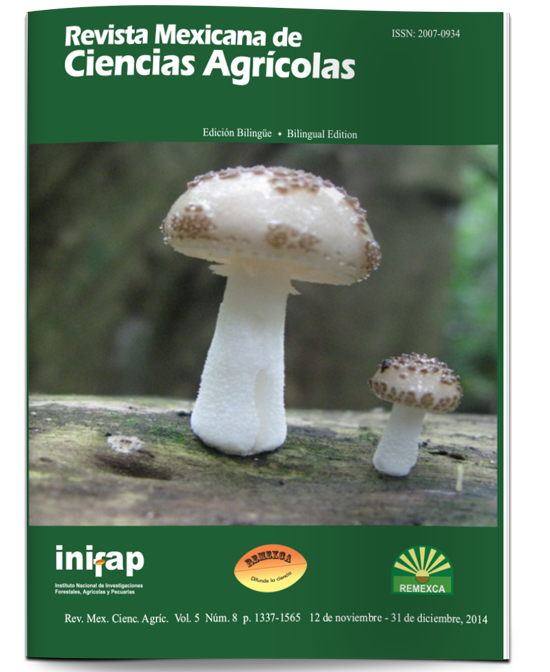Catalogue of fruit species in the southeast of the State of Mexico, Mexico
DOI:
https://doi.org/10.29312/remexca.v5i8.831Keywords:
edible fruits, introduced species, native species, taxonomic determinationAbstract
The geographical location of the State of Mexico involves different climates and ecosystems that confer a high biological diversity.The southeast region of the State of Mexico is integrated of the municipalities Tenancingo, Villa Guerrero, Malinalco Zumpahuacán, Ixtapan de la Sal, Tonatico, Coatepec de harinas, Almoloya of Alquisiras, Texcaltitlán, Sultepec and Zacualpan; they are part of the Balsas depression floristic province, ranked as one of the largest and most important of Mexico; however, existing data on fruit species that thrive in this basin are scarce indeed. In order to obtain a list of fruit species in this region from June 2010 to May 2011, biweekly botanical specimens were collected for determination and deposit in the herbarium “Eizi Matuda” (CODAGEM), of the Faculty of Agriculture Sciences of the Autonomous University of the State of Mexico. In total, 87 species of fruit, belonging to 57 genera and 34 families were obtained. 58.8% of the species are native and 41.2% are introduced. The family Rosaceae dominates in number of genera and species (7 and 12, respectively), followed by Fabaceae (4 genera and 10 species). The genera Citrus (7 species), Leucaena (5), Annona (4) and Passiflora (4) stand out for their richness; the biological form were best represented by the trees (70.1%) followed by the herbs (19.6%) and the bushes (10.3%). Results reflecting the richness of fruit in the southeast of the State of Mexico.
Downloads
Downloads
Published
How to Cite
Issue
Section
License
The authors who publish in Revista Mexicana de Ciencias Agrícolas accept the following conditions:
In accordance with copyright laws, Revista Mexicana de Ciencias Agrícolas recognizes and respects the authors’ moral right and ownership of property rights which will be transferred to the journal for dissemination in open access. Invariably, all the authors have to sign a letter of transfer of property rights and of originality of the article to Instituto Nacional de Investigaciones Forestales, Agrícolas y Pecuarias (INIFAP) [National Institute of Forestry, Agricultural and Livestock Research]. The author(s) must pay a fee for the reception of articles before proceeding to editorial review.
All the texts published by Revista Mexicana de Ciencias Agrícolas —with no exception— are distributed under a Creative Commons License Attribution-NonCommercial 4.0 International (CC BY-NC 4.0), which allows third parties to use the publication as long as the work’s authorship and its first publication in this journal are mentioned.
The author(s) can enter into independent and additional contractual agreements for the nonexclusive distribution of the version of the article published in Revista Mexicana de Ciencias Agrícolas (for example include it into an institutional repository or publish it in a book) as long as it is clearly and explicitly indicated that the work was published for the first time in Revista Mexicana de Ciencias Agrícolas.
For all the above, the authors shall send the Letter-transfer of Property Rights for the first publication duly filled in and signed by the author(s). This form must be sent as a PDF file to: revista_atm@yahoo.com.mx; cienciasagricola@inifap.gob.mx; remexca2017@gmail.
This work is licensed under a Creative Commons Attribution-Noncommercial 4.0 International license.



